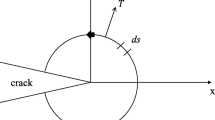Abstract
This paper presents a preliminary exploration on tribological properties of cement composite material at micro- and nano-scales by means of the nano-scratch technique, which is a new instrument overcoming the limitations of both the classical stylus scratch test and the atomic force microscope. Measurements were conducted on two very different types of material: cement clinker paste and polymer-based cement clinker. Mechanical parameters related to the nano-tribological performance, i.e. penetration depth, coefficient of friction, and elastic deformation ratio, were obtained from the scratching processes. By statistical deconvolution analysis, microstructure constituents with a large discrepancy in elastic modulus and hardness values can be captured as single peaks, but not for the mixture of C–S–H and Ca(OH)2 phases. A reverse tendency was observed between penetration depth and coefficient of friction of both the substrate and hard particle phase embedded in. An H/E ratio dependent elasto–plastic behavior was identified, with the elastic deformation to be dominant in high H/E ratio phases. The results confirm this new technique as a promising method for quantitative characterization of elasticity, hardness and mar resistance of heterogonous phases in cement composite.






Similar content being viewed by others
References
Taylor HFW (1993) Nanostructure of C–S–H: current status. Adv Cem Based Mater 1(1):38–46
Constantinides G, Ulm F, Van Vliet K (2003) On the use of nanoindentation for cementitious materials. Mater Struct 36(257):191–196
Constantinides G, Ulm FJ (2004) The effect of two types of C–S–H on the elasticity of cement-based materials: results from nanoindentation and micromechanical modeling. Cem Concr Res 34(1):67–80
Mondal P, Shah SP, Marks L (2007) A reliable technique to determine the local mechanical properties at the nanoscale for cementitious materials. Cem Concr Res 37(10):1440–1444
Mondal P, Shah SP, Marks LD (2008) Nanoscale characterization of cementitious materials. ACI Mater J 105(2):174–179
Jennings HM, Thomas JJ, Gevrenov JS, Constantinides G, Ulm FJ (2007) A multi-technique investigation of the nanoporosity of cement paste. Cem Concr Res 37(3):329–336
Sorelli L, Constantinides G, Ulm FJ, Toutlemonde F (2008) The nano-mechanical signature of ultra high performance concrete by statistical nanoindentation techniques. Cem Concr Res 38(12):1447–1456
Miller M, Bobko C, Vandamme M, Ulm FJ (2008) Surface roughness criteria for cement paste nanoindentation. Cem Concr Res 38(4):467–476
Vandamme M, Ulm FJ (2009) Nanogranular origin of concrete creep. In: Bazant ZP (ed) Proceedings of the National Academy of Sciences of the United States of America, pp 10552–10557
Vandamme M, Ulm FJ, Fonollosa P (2010) Nanogranular packing of C–S–H at substochiometric conditions. Cem Concr Res 40(1):14–26
Davydov D, Jirásek M, Kopecký L (2011) Critical aspects of nano-indentation technique in application to hardened cement paste. Cem Concr Res 41(1):20–29
Consiglio R, Randall NX, Bellaton B, von Stebut J (1998) The nano-scratch tester (NST) as a new tool for assessing the strength of ultrathin hard coatings and the mar resistance of polymer films. Thin Solid Films 332(1–2):151–156
Adams MJ, Allan A, Briscoe BJ, Doyle PJ, Gorman DM, Johnson SA (2001) An experimental study of the nano-scratch behaviour of poly(methyl methacrylate). Wear 250:1579–1583
Huang LY, Xu KW, Lu J, Guelorget B, Chen H (2001) Nano-scratch and fretting wear study of DLC coatings for biomedical application. Diam Relat Mater 10(8):1448–1456
Hangen UD (2001) A comparison of nano-hardness and scratch-resistance on Mohs minerals. Z Met 92(9):1074–1077
Shen WD, Mi L, Jiang B (2006) Characterization of mar/scratch resistance of coatings with a nano-indenter and a scanning probe microscope. Tribol Int 39(2):146–158
Graca S, Colaco R, Vilar R (2008) Micro-to-nano indentation and scratch hardness in the Ni–Co system: depth dependence and implications for tribological behavior. Tribol Lett 31(3):177–185
Logothetidis S, Charitidis C (1999) Elastic properties of hydrogen-free amorphous carbon thin films and their relation with carbon–carbon bonding. Thin Solid Films 353(1):208–213
Acker P (2001) Micromechanical analysis of creep and shrinkage mechanisms. In: Creep, shrinkage and durability mechanics of concrete and other quasi-brittle materials. Elsevier, Cambridge
Hodzic A, Stachurski ZH, Kim JK (2000) Nano-indentation of polymer–glass interfaces. Part I. Experimental and mechanical analysis. Polymer 41(18):6895–6905
Velez K, Maximilien S, Damidot D, Fantozzi G, Sorrentino F (2001) Determination by nanoindentation of elastic modulus and hardness of pure constituents of Portland cement clinker. Cem Concr Res 31(4):555–561
DeJong MJ, Ulm FJ (2007) The nanogranular behavior of C–S–H at elevated temperatures (up to 700°C). Cem Concr Res 37(1):1–12
Mindess S, Young JF (1981) Concrete, 2nd edn. Prentice-Hall, Englewood Cliffs
Charitidis C, Panayiotatos Y, Logothetidis S (2003) A quantitative study of the nano-scratch behavior of boron and carbon nitride films. Diam Relat Mater 12(3–7):1088–1092
Sinha SK, Song TW, Wan XF, Tong YJ (2009) Scratch and normal hardness characteristics of polyamide 6/nano-clay composite. Wear 266(7–8):814–821
Huang LY, Lu H, Xu KW (2004) Elasto-plastic deformation and fracture mechanism of a diamond-like carbon film deposited on a Ti–6Al–4V substrate in nano-scratch test. Thin Solid Films 466(1–2):175–182
Acknowledgments
The authors would like to acknowledge the financial support for this study from the Major State Basic Research Development Program of China (No. 2009CB623105) and the Program for Young Excellent Talents in Tongji University.
Author information
Authors and Affiliations
Corresponding author
Rights and permissions
About this article
Cite this article
Xu, J., Yao, W. Nano-scratch as a new tool for assessing the nano-tribological behavior of cement composite. Mater Struct 44, 1703–1711 (2011). https://doi.org/10.1617/s11527-011-9728-7
Received:
Accepted:
Published:
Issue Date:
DOI: https://doi.org/10.1617/s11527-011-9728-7




